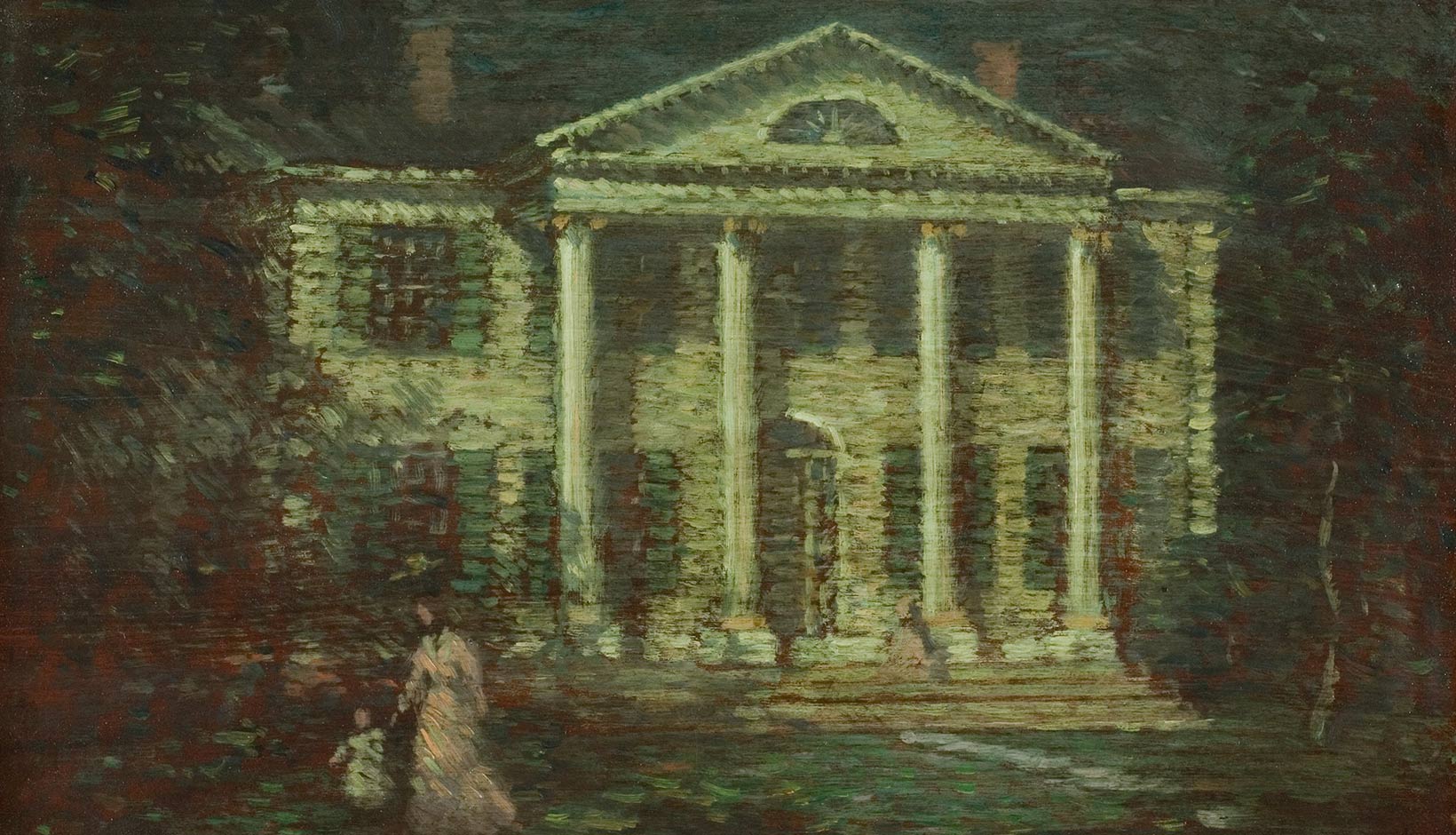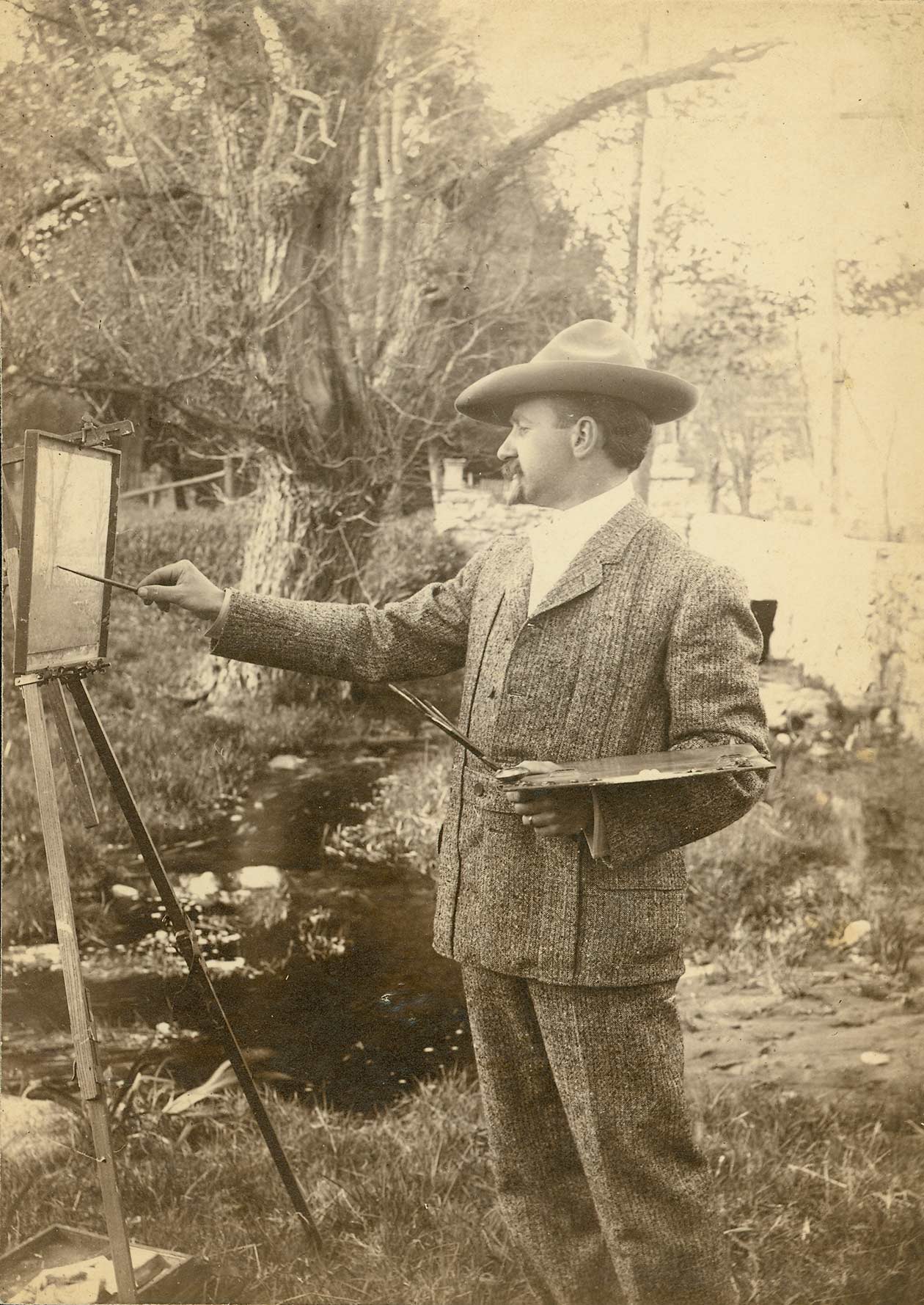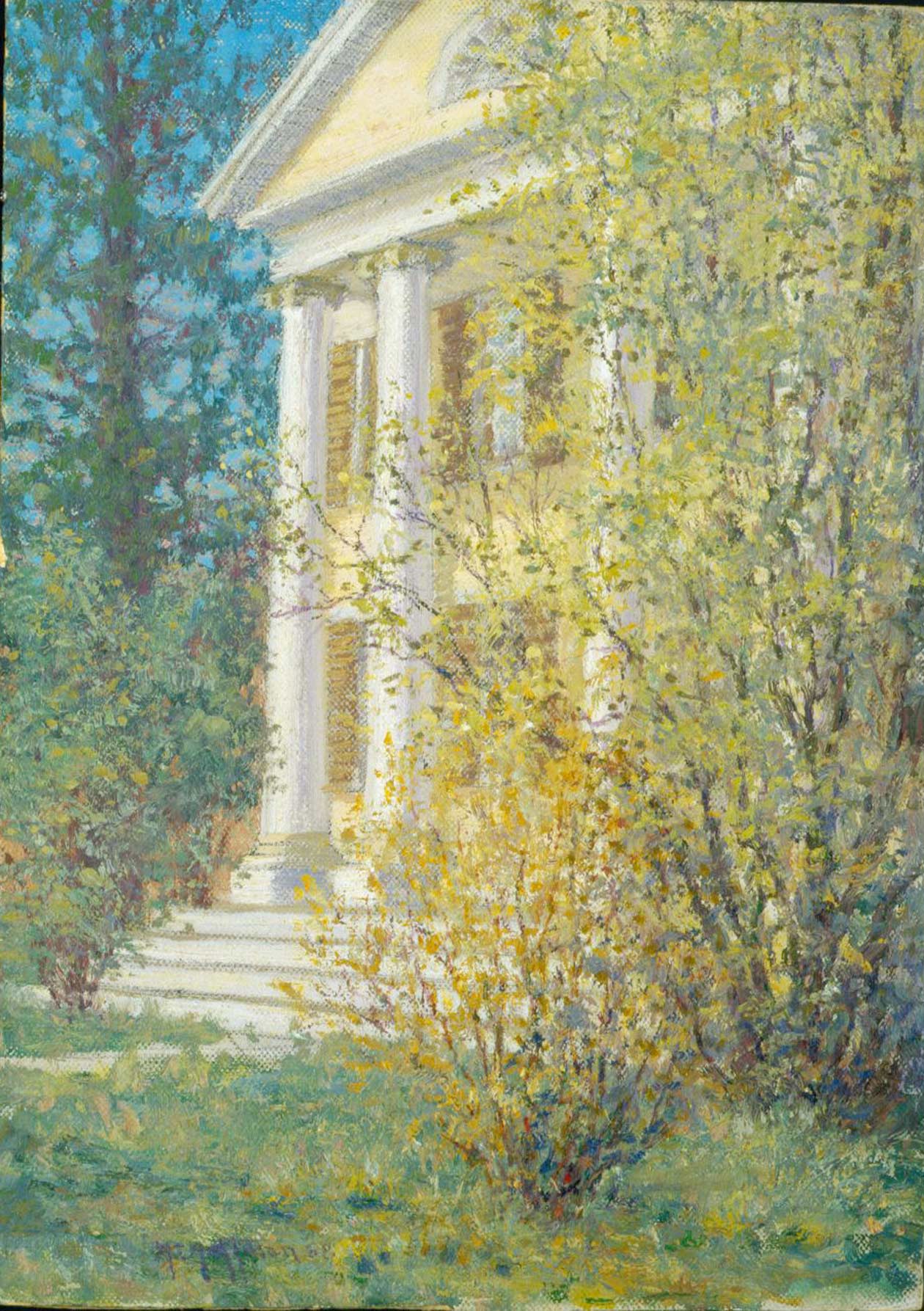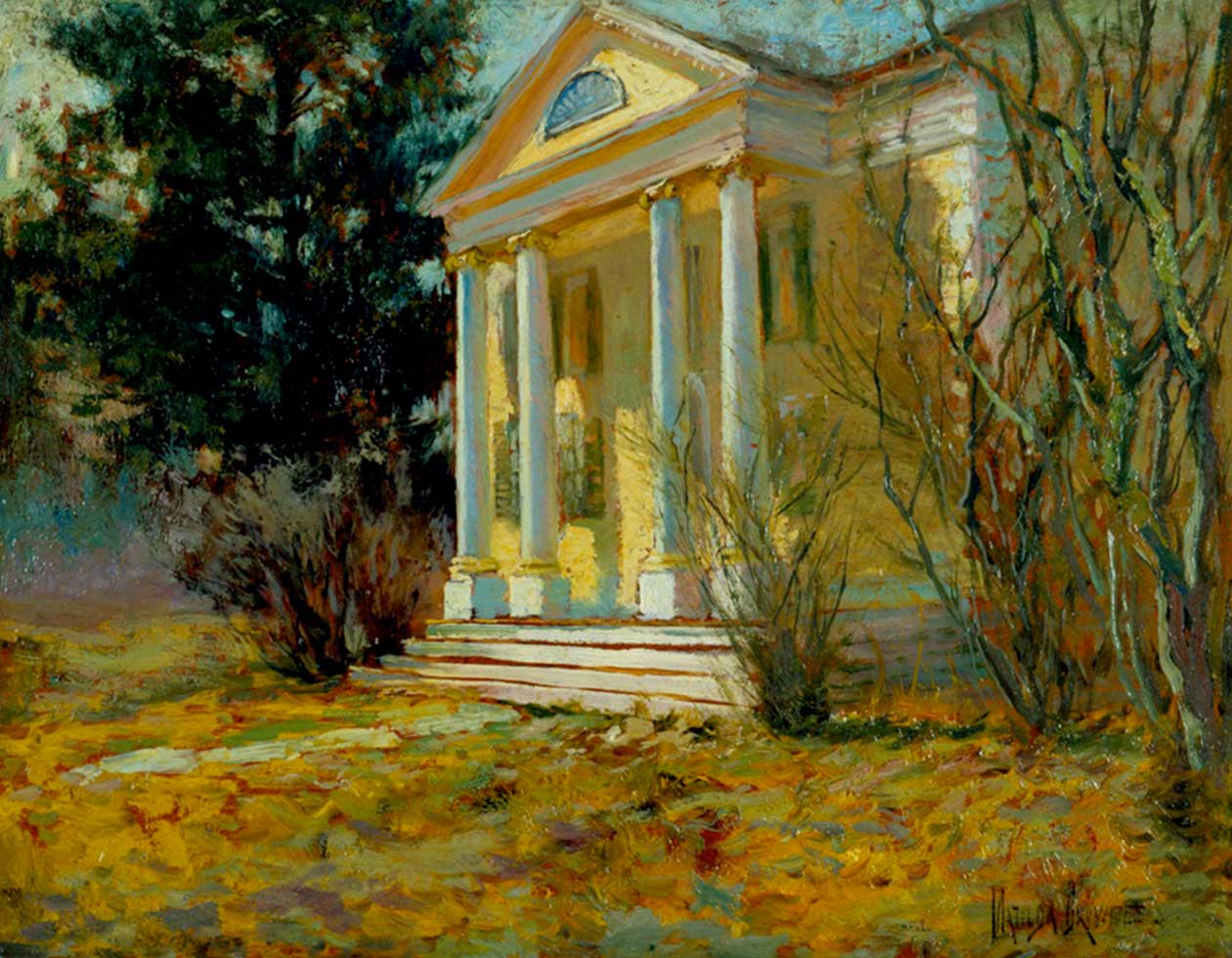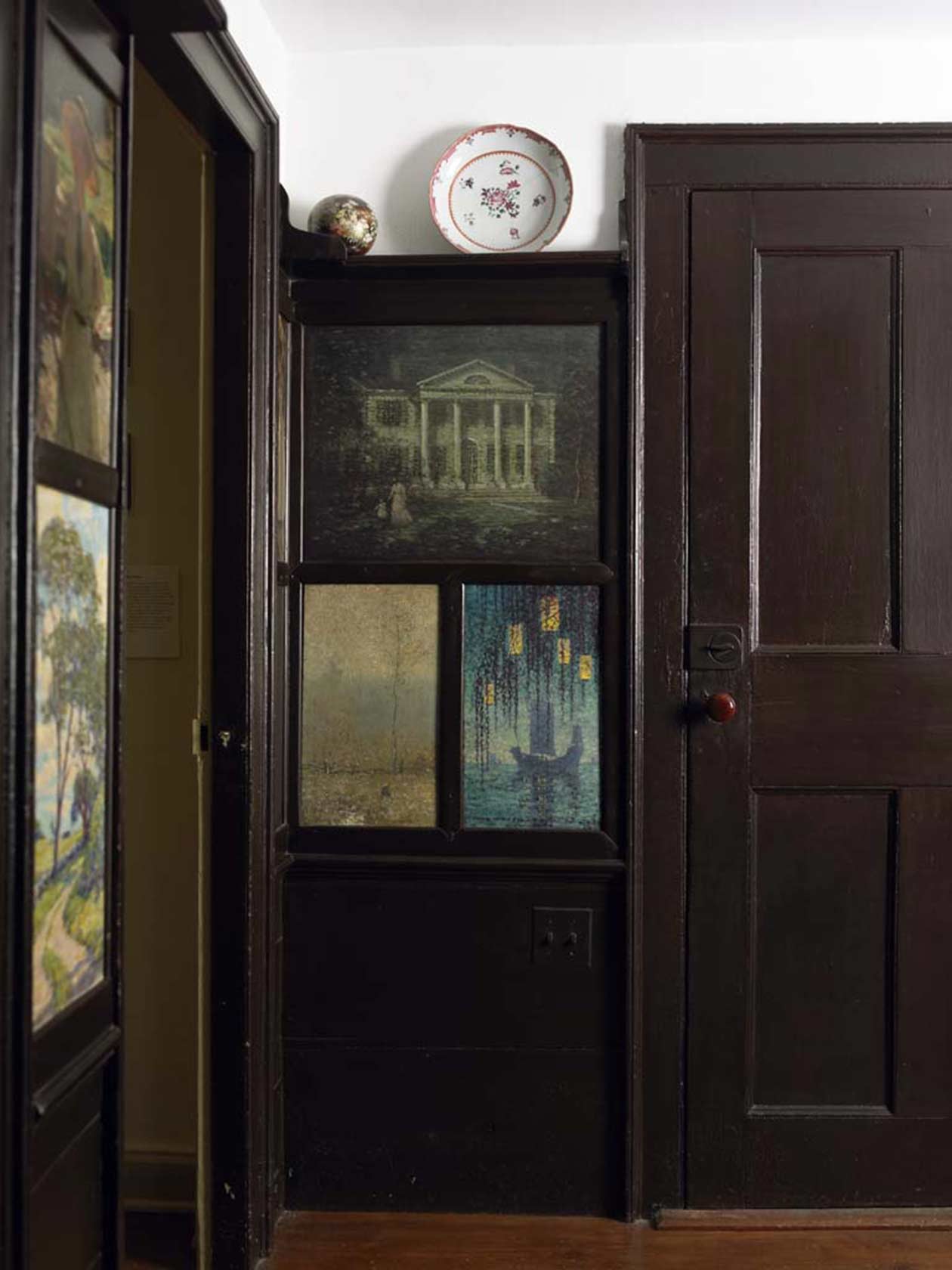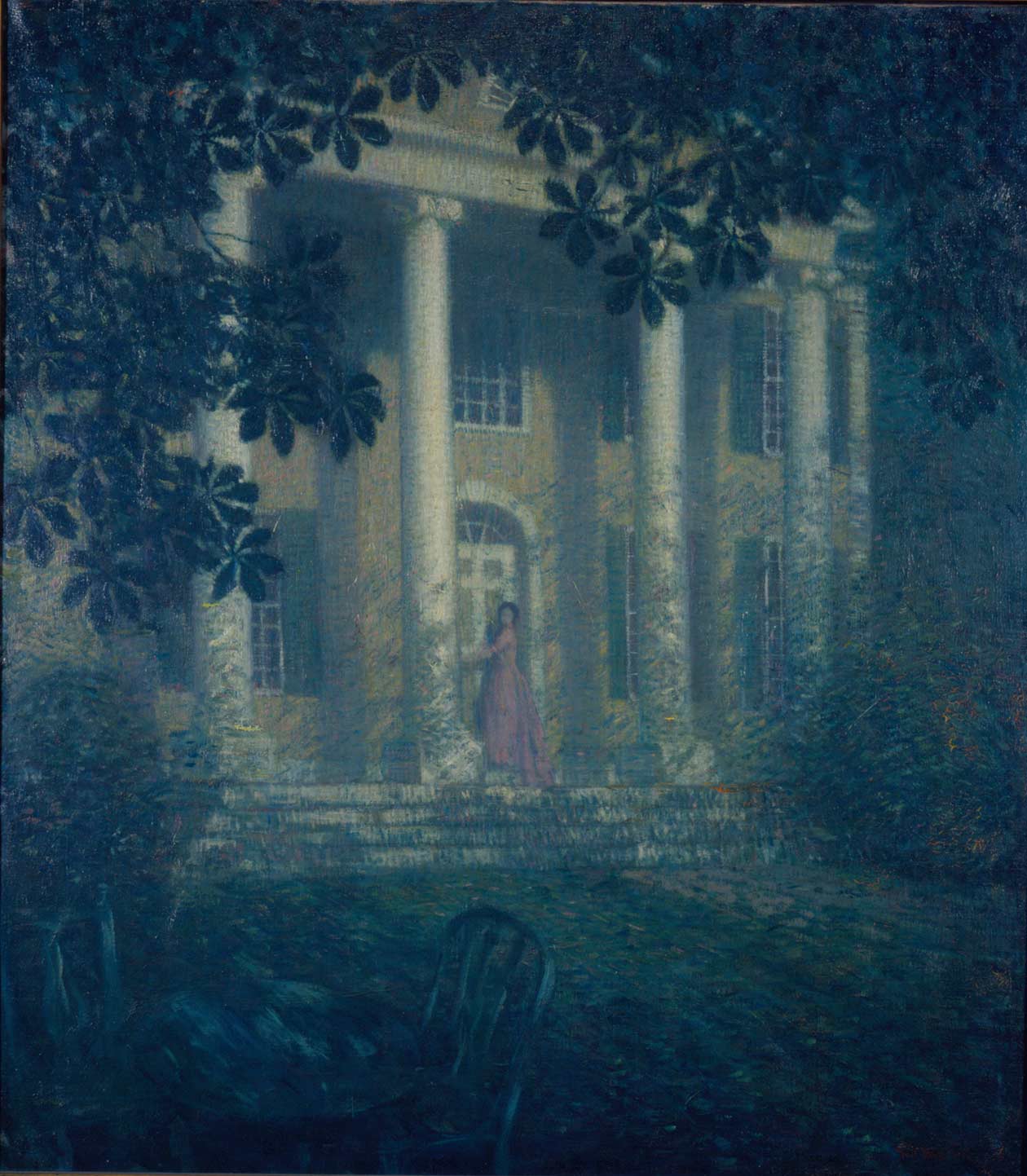Collections
In Situ: The Painted Panels
- The Museum will be closed Sunday, April 9 in observance of Easter.
Will Howe Foote (1874 – 1965)
Florence Griswold House
Although several Old Lyme artists portrayed the façade of their beloved Griswold House in easel paintings, in 1905 Will Howe Foote painted the only panel in the dining room that does. His easel painting of the home’s grand portico, A Summer’s Night (c. 1906), is also in the collection of the Florence Griswold Museum. The best-known image of the house, however, is May Night, a painting done in 1906, which set Willard Metcalf on the road to artistic stardom.
While it is not known whether Foote and Metcalf ever discussed these paintings, in progress or afterward, the three images display some striking similarities. All three ignore the actual shabbiness of the old house in these years and make it look new again. All three include one or more female figures in long pink gowns. All three are nocturnal scenes in which bright moonlight makes the house glow and casts deep shadows on the lawn. The art colonists called such nocturnes “rainy day” pictures, because they were painted inside a house or studio in inclement weather. They portray images seen in an artist’s mind rather than from behind an actual plein-air easel.
WILL HOWE FOOTE (1874-1965)
FLORENCE GRISWOLD HOUSE, 1905
OIL ON WOOD PANEL
GIFT OF THE ARTIST
Foote’s panel, however, has the distinction not only of showing more of the house (in a somewhat flawed perspective) and of including a child, but it has odd brushwork in a series of short horizontal strokes layered one above the other.
This romantic tonal scene, dark but for the light on the house and figures, thus has a textural “vibration” – a word used often about American Impressionism in the 1890s, when Childe Hassam was called “the arch vibrator.” The artists at Old Lyme found moonlight pictures to be a good way of uniting the atmospheric effects and limited palette of Tonalism with the themes and dashing brushwork of Impressionism.
Foote, a native of Grand Rapids, Michigan, arrived in Old Lyme in 1901 with his uncle, William Henry Howe, a famous cattle painter. Foote’s early work in Connecticut reflects his interest in soft, atmospheric tonal scenes, but Hassam’s influence led him to lighten his palette, sometimes to a very high key.
He constantly experimented with light and color, but his interest in form, mass, and simple geometric arrangements like those seen on this panel continued throughout his career. Foote settled year-round in Old Lyme in 1909 and was active in community affairs but spent most winters in warmer places. He died at age 90, the last survivor of the original Old Lyme group.

